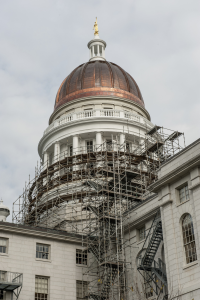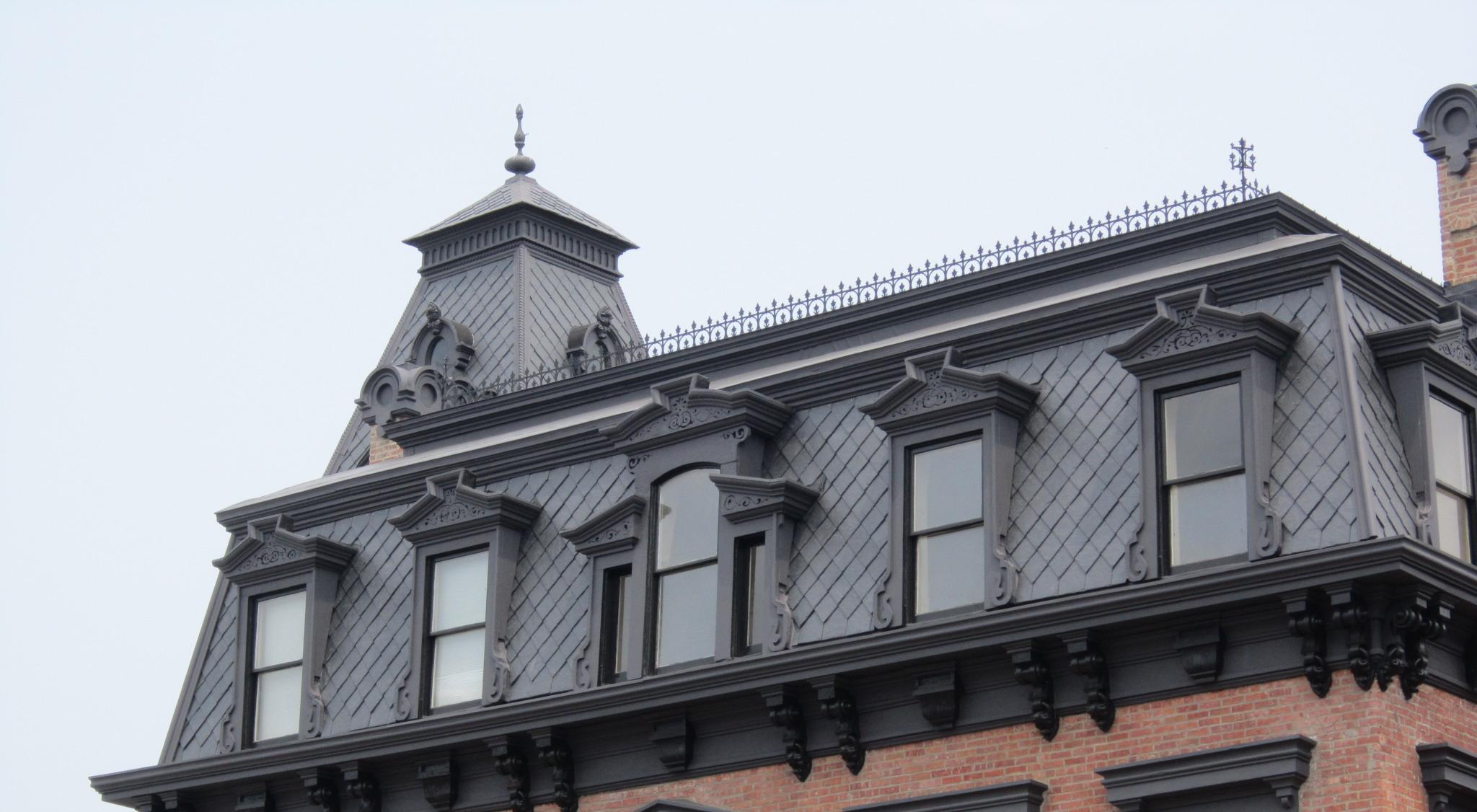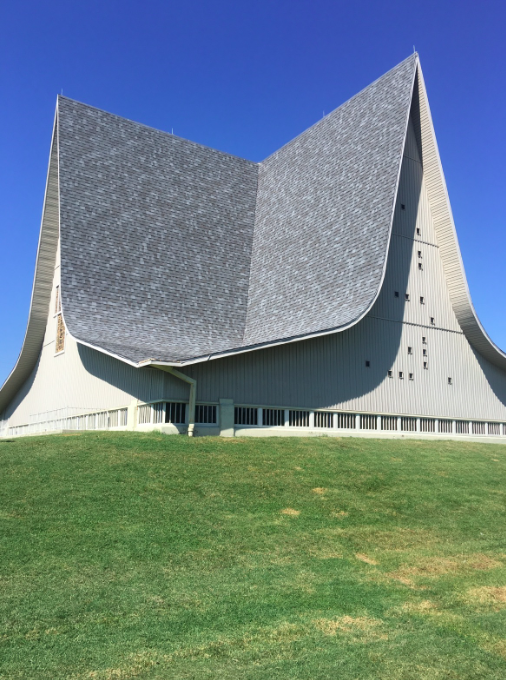Maine State House Dome Restoration, Augusta, Maine
Team
COPPERSMITH: The Heritage Co., Waterboro, Maine
GENERAL CONTRACTOR: Consigli Construction Co. Inc., Portland, Maine
ARCHITECT: LEO A DALY, Minneapolis
ENGINEER: Becker Structural Engineers, Portland

To remain proportional with the larger building, a new, higher copper-covered dome was built to replace the original cupola.
Roof Materials
Working 200 feet in the air on elaborate staging, carpenters, coppersmiths, engineers and other construction workers replaced more than 7,000 square feet of copper on the dome. The existing unique, curved copper components were carefully removed and saved to serve as models for the new components.
A full sheet-metal shop, consisting of an 8-foot brake, 52-inch jump shear and benches, was set up onsite at the 63-foot elevation mark, along with five cases of 20-ounce copper (about 12,880 pounds). Each copper component was carefully measured, cut and bent onsite, and then installed.
The compound curving components were made in The Heritage Co.’s “home” shop, using a shrinker/stretcher machine and an English wheel. Then, the copper was handformed over custom-made wood forms. Care was taken to exactly match the size and configuration of the existing components, as well as the seam layouts that were prevalent in the original copper work
Approximately 15 to 18 percent of the copper was waste because of the curved nature of many of the components. The waste was made into copper clip stock for the roof installation or recycled.
COPPER MANUFACTURER: Revere Copper Products Inc.
COPPER SUPPLIER: Beacon Sales Co.
Roof Report
The Maine State House was originally designed by renowned architect Charles Bulfinch in 1832. The dome was added in 1910 as part of a major remodeling and expansion project that ultimately created the building’s current appearance based on designs by G. Henri Desmond.
The original façade was preserved during remodeling, though the length of the building was doubled to 300 feet by extending the north and south wings. To remain proportional with the larger building, a new, higher copper-covered dome was built to replace the original cupola. The new dome rises to a height of 185 feet and is topped by a gold-clad copper statue, called “Lady Wisdom”, designed by W. Clark Noble.
Over time, weather damage and holes caused by hail strikes on the top of the dome caused leaks in the building. The seams between the copper sheets also caused problems for the underlying steel and concrete structure of the dome. The work included the installation of expansion joints, repairs to prevent water infiltration and restoration of the cupola (located between the top of the dome and Lady Wisdom), using a highly durable paint system. Lighting upgrades, copper repairs and the restoration of the gilded Lady Wisdom statue located atop the dome were also part of the project.
The dome’s structural system and framing were analyzed by Becker Structural Engineering one year in advance of dome construction, so Consigli Construction could create a 3-D model for staging to eliminate interior shoring.
Overall, this project restored one of Maine’s most significant historic landmark buildings, returning its signature copper dome and gilded Lady Wisdom sculpture to their original intended conditions.
PHOTO: Consigli Construction Co. Inc.






Be the first to comment on "Project Profiles: Historic Renovation"